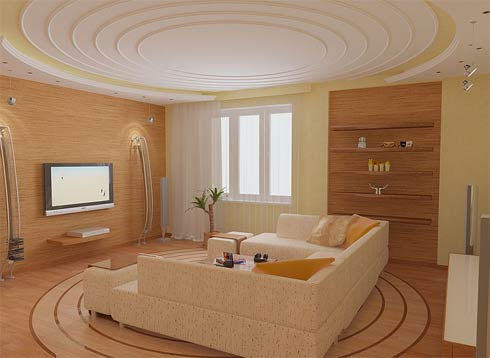The Greatest Interior Designers Close to Me Dwelling Builder Digest
 Area of interest Design Home gives among the most beautiful and unique house furnishings out there within the Northern Colorado space. Simply inform us what you want, submit a undertaking and get dozens of designs to choose from. In the U.S., widespread inside design & lifestyle shows embody Martha Stewart Residing and Residing Large featuring Karen Mills. Really useful: Rocket Lawyer makes it easy to create a professional service settlement to your interior design business once you join their premium membership.
Area of interest Design Home gives among the most beautiful and unique house furnishings out there within the Northern Colorado space. Simply inform us what you want, submit a undertaking and get dozens of designs to choose from. In the U.S., widespread inside design & lifestyle shows embody Martha Stewart Residing and Residing Large featuring Karen Mills. Really useful: Rocket Lawyer makes it easy to create a professional service settlement to your interior design business once you join their premium membership.
Designers will be needed to reply to shopper expectations that the interiors of buildings meet sure situations, similar to being environmentally friendly and simply accessible. Statistics present that the median wage of an entry-level inside designer within the U.S. is $42,380 per yr.
Consequently, there isn’t any laborious knowledge or statistics to suggest exactly what number of redesigners there are. When there may be so much design work that you’ve a shopper waiting listing, it’s time to consider including workers that can assist you. The record was compiled primarily based on an exhaustive evaluate of inside designers and their online presences, social media activities, and the awards in which they’ve received.
As you possibly can see, the essential startup prices for interior design businesses are pretty low, particularly for those who already personal a pc and have reliable transportation in good situation (since your car will likely be your moveable workplace).
For our prospects, we can present luxurious inside design companies for elegant homes, Vilas, residences, but also glamorous and fancy eating places, lodges, hotel rooms, beauty outlets, garments retailers, and many others. Similar to we use blueprints, they will wireframe your design and can assist you optimize it to assist lead new clients in, reasonably than have them bounce away.…
 Flick by our kitchen design, toilet design, mattress room design, and extra residing areas to create a sanctuary no matter the room. Picking out the suitable furnishings is essential, but the place you set it’s equally important to designing a living room. Full full dwelling interior designs and landscaping for all your initiatives, then create interior and exterior initiatives that will help you shut gross sales sooner.
Flick by our kitchen design, toilet design, mattress room design, and extra residing areas to create a sanctuary no matter the room. Picking out the suitable furnishings is essential, but the place you set it’s equally important to designing a living room. Full full dwelling interior designs and landscaping for all your initiatives, then create interior and exterior initiatives that will help you shut gross sales sooner. Marc-Michaels is thought the world over for making a premier life-style experience by way of your senses, by time and space, through reminiscence, through emotion, and through the anticipation of what lies past your door. Keely Hersh is the owner and designer of Proper at House Interiors. As well as, each HGTV and the DIY Network also televise many programs about inside design and adorning, that includes the works of quite a lot of inside designers, decorators, and home improvement experts in a myriad of projects.
Marc-Michaels is thought the world over for making a premier life-style experience by way of your senses, by time and space, through reminiscence, through emotion, and through the anticipation of what lies past your door. Keely Hersh is the owner and designer of Proper at House Interiors. As well as, each HGTV and the DIY Network also televise many programs about inside design and adorning, that includes the works of quite a lot of inside designers, decorators, and home improvement experts in a myriad of projects. Niche Design Home gives some of the most exquisite and distinctive dwelling furnishings available within the Northern Colorado area. That includes mild contours, playful accent colors, and a balance of engineered and natural supplies, Scandinavian furniture are easy, contemporary, and purposeful. Its pieces are highly versatile and may complement a myriad of design styles. A purist strategy when adorning a mid-century fashionable home could make your inside design look a bit passé.
Niche Design Home gives some of the most exquisite and distinctive dwelling furnishings available within the Northern Colorado area. That includes mild contours, playful accent colors, and a balance of engineered and natural supplies, Scandinavian furniture are easy, contemporary, and purposeful. Its pieces are highly versatile and may complement a myriad of design styles. A purist strategy when adorning a mid-century fashionable home could make your inside design look a bit passé. Seeking to beautify your new residence and searching for thematic inspiration? Workforce SFX has demonstrated innovative designs, ideas and had successfully visualized the dream home we had conceptualized. We’re a professional inside designing firm offering affordable inside solutions to our prospects. Farmhouse decor is a modern approach to cabin-impressed inside design.
Seeking to beautify your new residence and searching for thematic inspiration? Workforce SFX has demonstrated innovative designs, ideas and had successfully visualized the dream home we had conceptualized. We’re a professional inside designing firm offering affordable inside solutions to our prospects. Farmhouse decor is a modern approach to cabin-impressed inside design. Our program educates college students to be interior designers who make priceless contributions to their occupation, talk effectively, and make a optimistic affect on society. Light fixtures are simply as structured as the decor and furnishings. Analyze residential supplies, merchandise, house plans, furnishings, and lighting which are applicable to individuals of varied ages and talents. Research should be performed under the supervision of a full-time Interior Design or Architecture faculty member.
Our program educates college students to be interior designers who make priceless contributions to their occupation, talk effectively, and make a optimistic affect on society. Light fixtures are simply as structured as the decor and furnishings. Analyze residential supplies, merchandise, house plans, furnishings, and lighting which are applicable to individuals of varied ages and talents. Research should be performed under the supervision of a full-time Interior Design or Architecture faculty member. For inside designers and designers, it’s essential to have an internet site worthy of their expertise and ability. This Brazilian magazine is a good reference in design and structure. From trendy countryside homes to inner city warehouses, we discover creative inside ideas and uncover the beauty of contemporary inside adorning types. Keely Hersh is the owner and designer of Proper at House Interiors.
For inside designers and designers, it’s essential to have an internet site worthy of their expertise and ability. This Brazilian magazine is a good reference in design and structure. From trendy countryside homes to inner city warehouses, we discover creative inside ideas and uncover the beauty of contemporary inside adorning types. Keely Hersh is the owner and designer of Proper at House Interiors. We offer students the data necessary to pursue careers as inside designers who create beautiful, useful and sustainable interiors that positively impression society. Relying on the land lot , constraints and design liberties for the outside architecture, the inside of a house can even be strongly influenced by the space available, the setting and local weather, the orientation of the land, and many others. For our customers, we will provide luxurious interior design providers for elegant homes, Vilas, residences, but also glamorous and fancy eating places, hotels, resort rooms, magnificence shops, garments shops, and many others.
We offer students the data necessary to pursue careers as inside designers who create beautiful, useful and sustainable interiors that positively impression society. Relying on the land lot , constraints and design liberties for the outside architecture, the inside of a house can even be strongly influenced by the space available, the setting and local weather, the orientation of the land, and many others. For our customers, we will provide luxurious interior design providers for elegant homes, Vilas, residences, but also glamorous and fancy eating places, hotels, resort rooms, magnificence shops, garments shops, and many others. Trying to enhance your new home and looking for thematic inspiration? Like a builder will advise a consumer on what can and can’t be finished from a structural perspective, an interior consultant will provide advice on what should and shouldn’t be completed when it comes to colours, area structure, material combos, lighting and so on.
Trying to enhance your new home and looking for thematic inspiration? Like a builder will advise a consumer on what can and can’t be finished from a structural perspective, an interior consultant will provide advice on what should and shouldn’t be completed when it comes to colours, area structure, material combos, lighting and so on. As a group, we achieve this far more than merely define what a room or residence ought to seem like. Additionally, for those who’re wanting so as to add a new piece or two to your private home, try our essential retailer where we always curate our catalog for the latest inside design styles. Rugs and chandeliers are two integral parts of Parisian interiors.
As a group, we achieve this far more than merely define what a room or residence ought to seem like. Additionally, for those who’re wanting so as to add a new piece or two to your private home, try our essential retailer where we always curate our catalog for the latest inside design styles. Rugs and chandeliers are two integral parts of Parisian interiors.